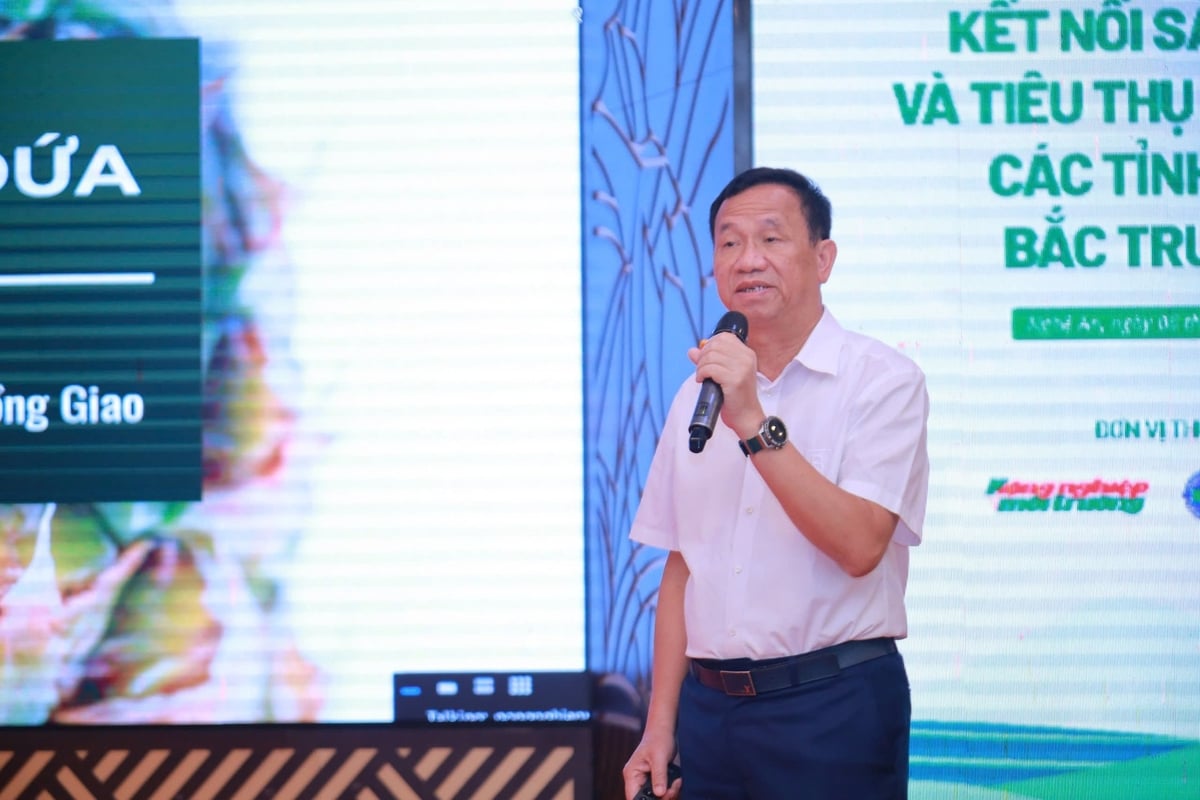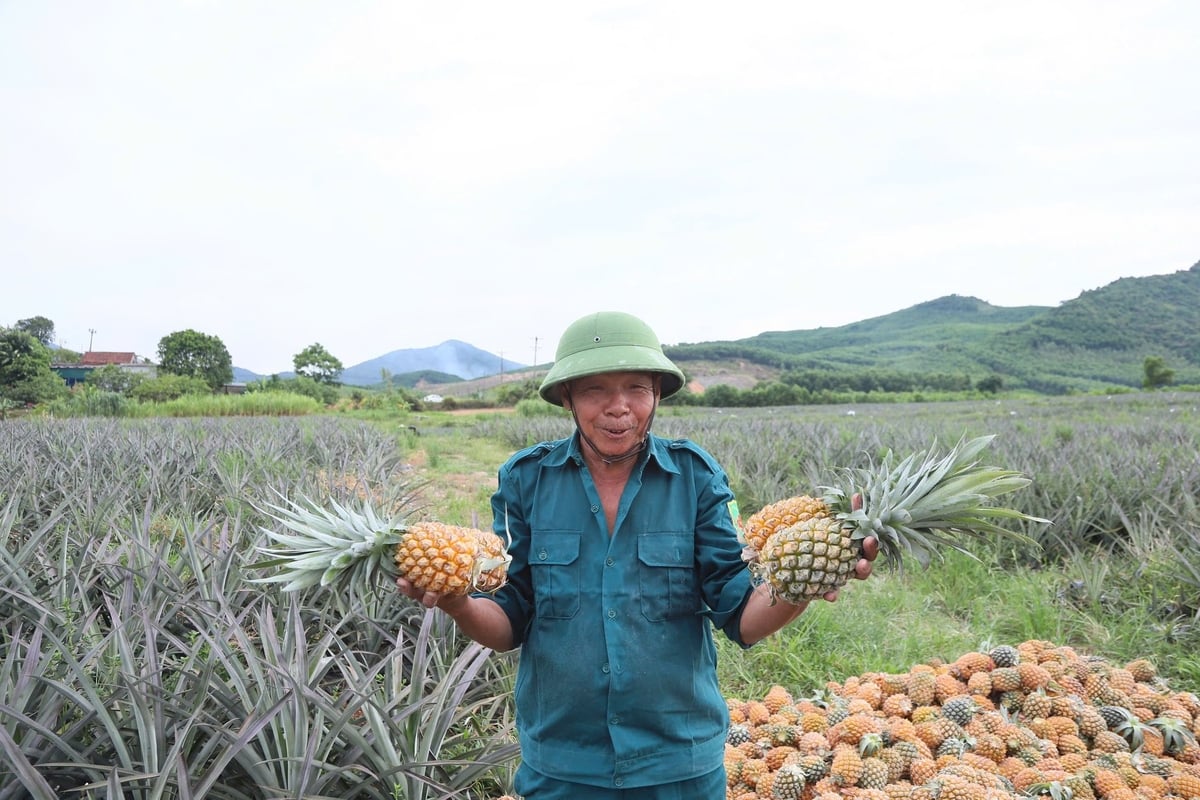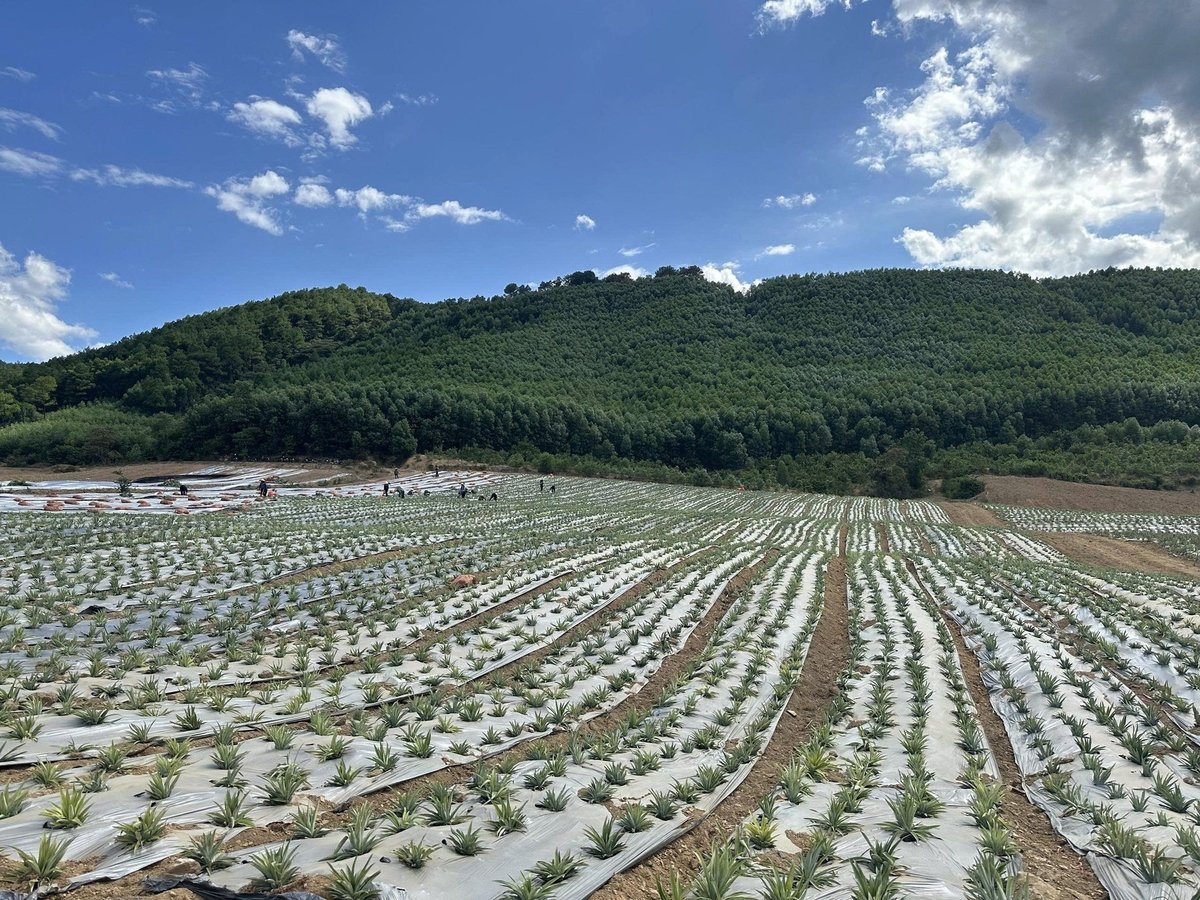December 1, 2025 | 10:59 GMT +7
December 1, 2025 | 10:59 GMT +7
Hotline: 0913.378.918
December 1, 2025 | 10:59 GMT +7
Hotline: 0913.378.918
At the North Central Provinces’ Agricultural Production and Consumption Connection Forum on August 6, Dr. Dinh Cao Khue, Chairman and CEO of Dong Giao Export Food Company (DOVECO), emphasized that pineapple cultivation presents a viable economic path for many central provinces. This is attributed to favorable natural conditions, growing demand for deep processing, and superior economic efficiency compared to traditional crops.

Dr. Dinh Cao Khue, Chairman and CEO of Dong Giao Export Food Company (DOVECO). Photo: VAN.
Global pineapple production has seen a steady increase from 25.44 million tons in 2014 to nearly 30 million tons in 2024, according to statistical data. As a high-value agricultural commodity, especially when processed, pineapples offer significant economic potential. Vietnam currently ranks 11th globally in pineapple production with 760,000 tons, accounting for approximately 2.2% of the global export market share. With key players like Costa Rica, the Philippines, and Thailand holding 39.8%, 22.2%, and 9.5% of the market respectively, Vietnam has considerable room for expansion, particularly as the global pineapple market grows at a stable 5–6% annually.
Dr. Khue noted that a major opportunity for Vietnam's pineapple industry lies in shifting consumer trends. Global consumers increasingly favor green, naturally processed foods and environmentally friendly packaging. Products such as pure pineapple juice and canned pineapples using Tetra Recart paper technology are gaining popularity in demanding markets like Japan, Europe, and the U.S. This presents a clear path for Vietnamese businesses if they invest appropriately in processing and traceability.
From an ecological perspective, Dr. Khue stated that the North Central region - specifically Ninh Binh, Thanh Hoa, Nghe An, Ha Tinh, and Quang Tri provinces—possesses ideal conditions for developing concentrated pineapple cultivation areas. Pineapples thrive in temperatures between 25∘C and 35 ∘ C, with annual rainfall around 1,500 mm, a soil pH of 4.0 to 6.0, and a need for loose, well-drained soil with plenty of diffused light. Soil analysis in these provinces shows that most nutrient and pH levels fall within the optimal range for pineapple growth.

Pineapple cultivation can mitigate the "bumper harvest, low price" problem by using growth-regulating techniques to extend the harvesting period. Photo: VAN.
Cultivation in these provinces has already yielded clear results. In Ha Tinh, the Queen pineapple variety is being grown in districts such as Cam Xuyen and Ky Anh. Planted between September and December 2024, the crop is ready for harvest after 10 - 12 months. Cultivation costs, ranging from 118 - 128 million VND per hectare, are well within the reach of local households. Additionally, Cayene and MD2 varieties are being expanded in other regions like Gia Lai, where the MD2 variety can generate profits of over 724 million VND per 18-month cycle.
Currently, Vietnam primarily cultivates three main varieties: MD2, Cayenne, and Queen. The MD2 variety is the leading export pineapple, accounting for 55% of the global market and 70 - 75% of the European market. Annually, MD2 yields about 16.1 million tons from 582,000 hectares. Cayenne is suitable for juice and canning, while Queen is known for being easy to grow, very sweet, and ideal for domestic consumption and fresh export. However, Dr. Khue believes that the proportion of Queen pineapples grown in Vietnam remains too high, while the area for MD2 and Cayenne varieties has yet to meet the demands of the export market.
According to Dr. Khue, the economic efficiency of pineapple cultivation far surpasses many traditional crops. On average, one hectare of MD2 pineapples generates revenue of over 1.1 billion VND with production costs of approximately 375 million VND, resulting in a profit of more than 724 million VND over an 18-month cycle. Cayenne and Queen varieties yield profits of 485 million and 373 million VND per hectare, respectively. Calculated on an average annual income basis, MD2 pineapples can achieve about 483 million VND per hectare per year, which is 10 times that of rice, 20 times that of cassava, and 30 times that of acacia. This analysis, comparing pineapples to other common crops, clearly demonstrates the significant economic advantage.

DOVECO can consume the output from 30,000 to 40,000 hectares of pineapples annually without facing an oversupply issue. Photo: VAN.
Notably, pineapple cultivation can mitigate the "bumper harvest, low price" problem by using growth-regulating techniques to extend the harvesting period. Nghe An farmers have been able to delay harvests until November or December, rather than having to sell all at once during the peak season in May and June. This helps stabilize prices and ensures a year-round supply. Dr. Khue highlighted that even a single household in Quynh Luu, Nghe An, could partner with DOVECO to sell thousands of tons of pineapples, underscoring the immense potential for production linkages if proper planning and organization are in place.
Currently, DOVECO can consume the output from 30,000 to 40,000 hectares of pineapples annually without facing an oversupply issue. Therefore, Dr. Khue urged local authorities to develop proper raw material area plans, avoiding uncoordinated planting or internal competition. He also called on cooperatives, businesses, and farmers to build strong value chains, ensure quality control, and adopt VietGAP and GlobalGAP standards to serve both the fresh and processed export markets.
Based on practical experience, Dr. Khue concluded that developing the pineapple sector in the North Central region is not just a single economic choice, but could become a strategic industry. This would require synchronized investment in varieties, land, technology, processing, and market access. With a favorable climate, abundant reservoirs, an affordable workforce, and increasingly sophisticated farming techniques, the North Central provinces are well-positioned to become a national hub for pineapple production, substantially contributing to increasing the value of Vietnamese agricultural products within the global value chain.

(VAN) The inevitable path forward is to reorganize production along the value chain, utilizing cooperatives as the core, enterprises as the driving force, and farmers as the central subjects.

(VAN) On November 28, Minister Tran Duc Thang, together with China's Minister of Agriculture and Rural Affairs Han Jun, chaired the 2nd meeting of the Viet Nam - China Agricultural Cooperation Committee.

(VAN) Forest carbon credits are only accepted when they ensure absolute environmental integrity, additionality, permanence, and transparency.

(VAN) Viet Nam partners with Beijing on controlling air pollution, cross-regional management, high-tech monitoring and relocating polluting facilities.

(VAN) With a USD 50 million investment, Australia is partnering with Viet Nam to operate its first public electric bus fleet and develop a nationwide EV charging network.

(VAN) On November 28, in Beijing, Minister Tran Duc Thang met Minister of Ecology and Environment of China Huang Runqiu, to share experience on environmental protection.
/2025/11/28/0950-2-120557_751.jpg)
(VAN) The recent flood spell in the South Central region clearly reflects the characteristics of natural disasters in 2025, which are compound, prolonged, and amplified.